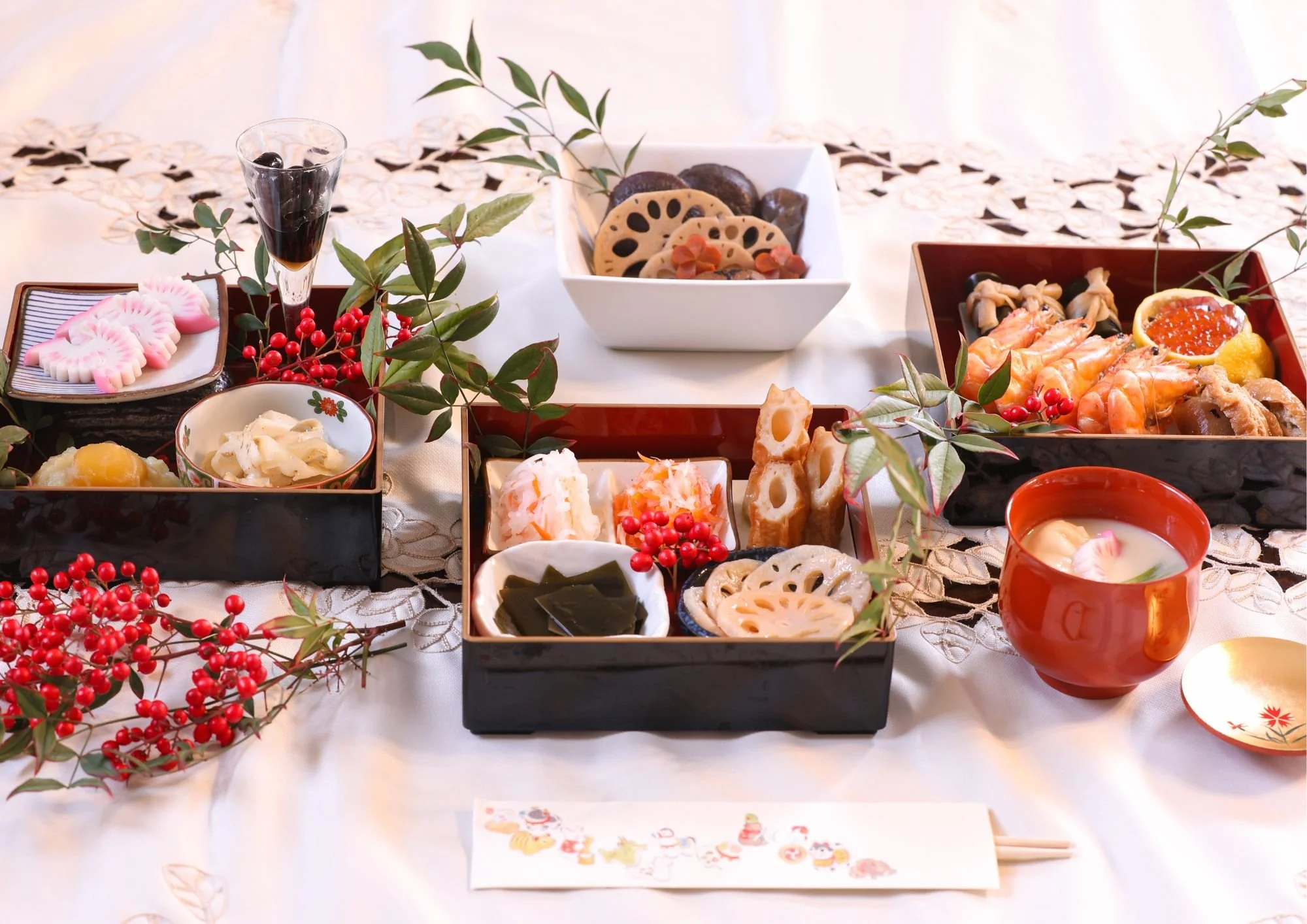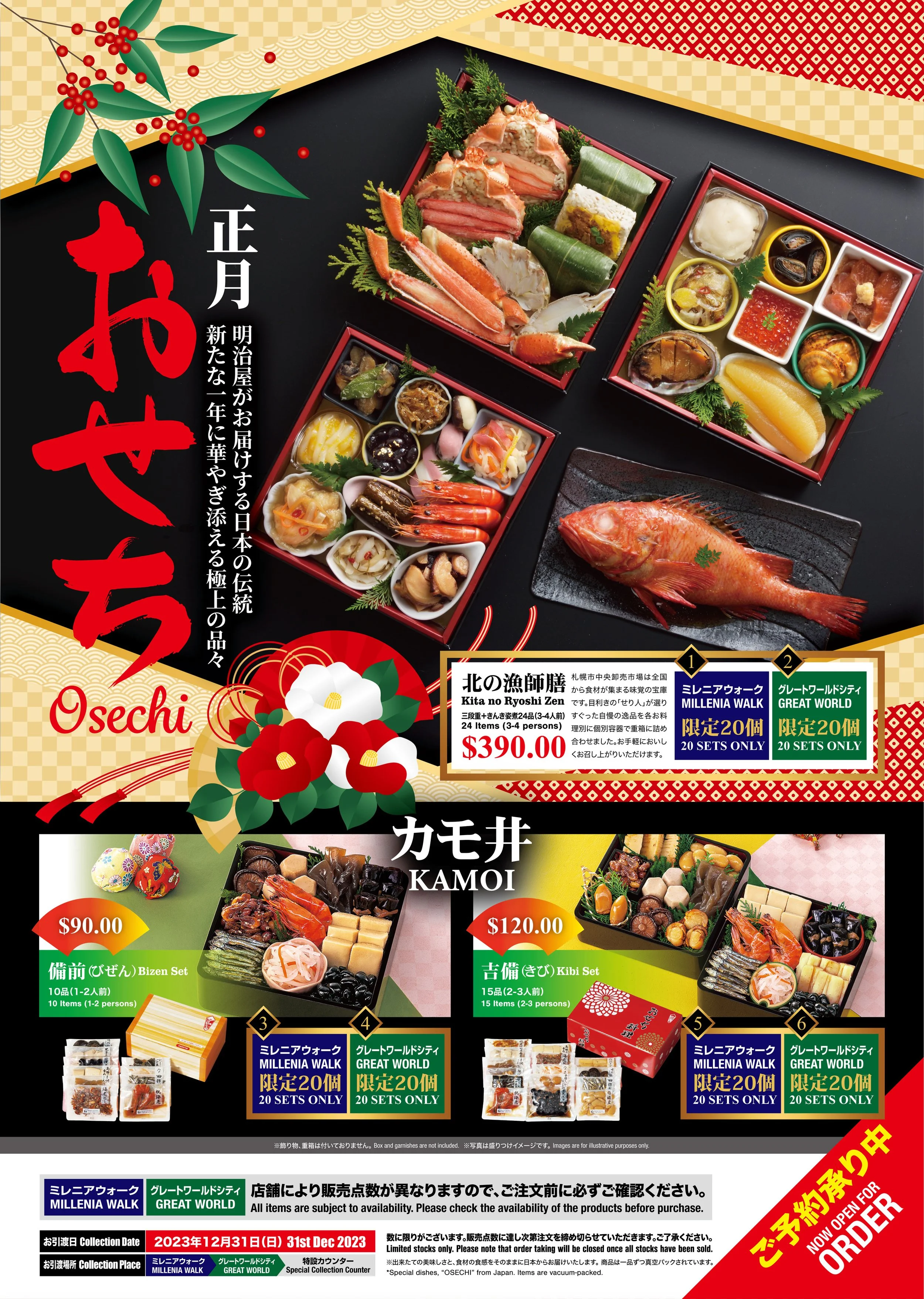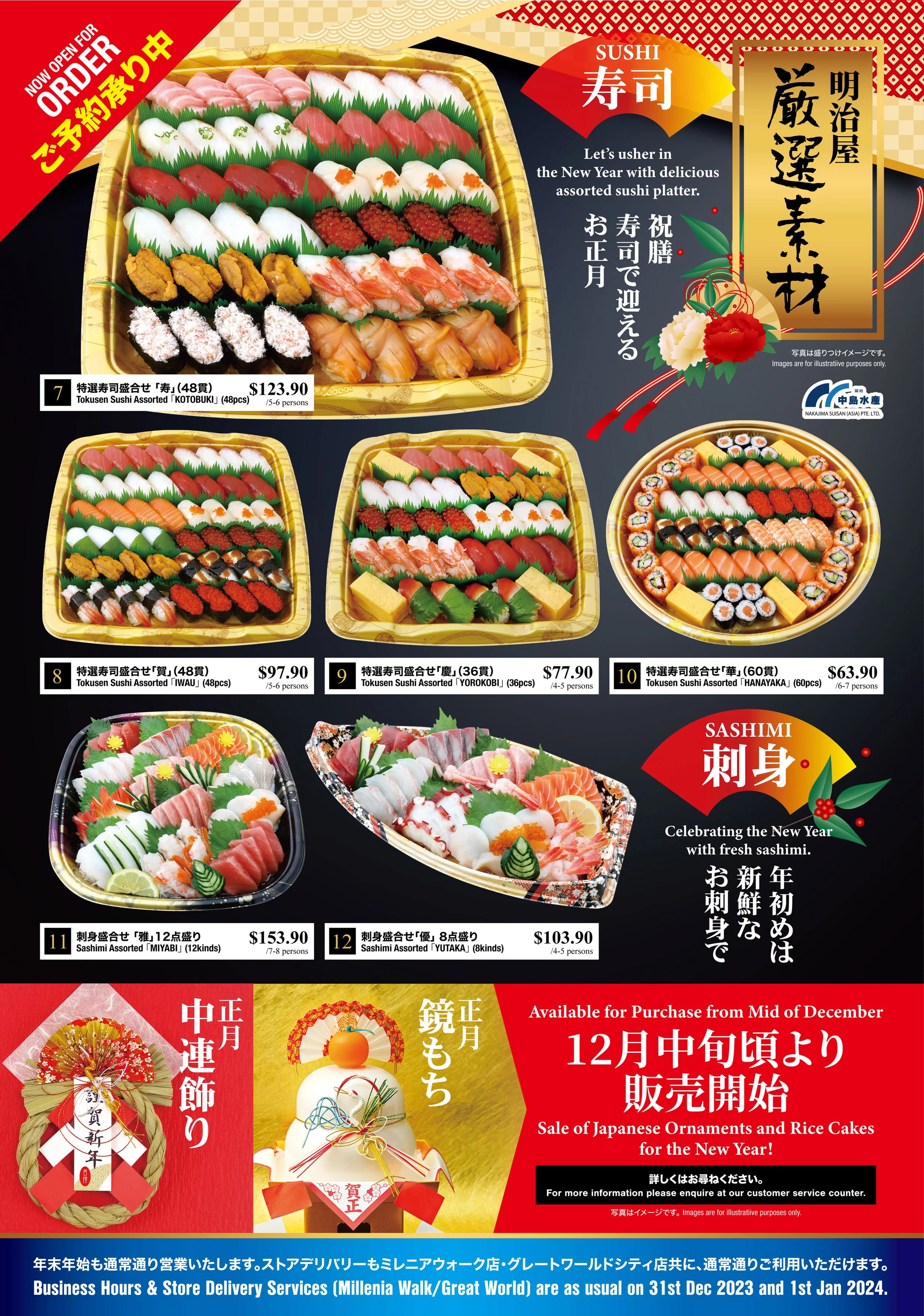Eat Osechi (Traditional Japanese Cuisine) On New Year’s Day
Source: Canva
In Japanese tradition, the first few days of New Year lay the foundation for the months to follow. It’s a time for ambitious resolutions, joyous gatherings and traditional New Year’s cuisine- osechi. This special traditional cuisine is eaten, in the hopes for a smooth year ahead.
Read on to find out where you can get your hands on osechi in Singapore!
What is Osechi?
The dishes in osechi cuisine vary from region to region in Japan and even from family to family. Dating from the Meiji period (1868-1912), a set of square boxes is commonly used to contain the osechi. Each dish has its own meaning and they are placed in specific tiers of one to five. It is believed that odd numbers bring good luck. 5 tiers were official in the olden days, while 3 tiers have become most popular in recent days.
Source: Canva
Ichi-no-ju, the first tier, contains sweet dishes. The most classic sweet dish is 栗金団 kuri-kinton (sweet chestnut). Furthermore, its shiny yellow colour and its Chinese character 金 (kin) meaning gold, represent fortune and a prosperous year.
Other iconic sweet dishes include kuromame (sweet black soybeans) which represent a wish for diligence and hard work. Next, tazukuri (candied anchovies) are also eaten as a symbol of good harvest, as sardines were traditionally used to fertilise rice paddies which resulted in bountiful yields..
Source: Canva
The second tier, ni-no-ju, holds seafood, grilled meat and pickled foods. Buri (yellowtail), is a good-luck fish for a successful career in the future. Tai (grilled sea bream) is an indispensable dish for celebratory meals, emanates from the word medetai, meaning congratulatory. Other seafood include shrimps which symbolise longevity- to live long until one’s back becomes round like a shrimp.
Source: Canva
Also, kamaboko (fish paste) is another classic osechi dish, for its shape, red and white colours resemble the rising sun. Osechi kamaboko specifically refers to the first sunrise of the new year. Another dish is the elegant datemaki (rolled egg and fish cake dish made with mirin) represents the wish for auspicious days ahead.
The subsequent third and fourth tiers may contain vegetables such as chikuzen-ni, a tasty dish of simmered mixed vegetables, particularly lotus root. The fifth tier, go-no-ju may not be filled with food but left empty, as it is meant to be filled with hope and good fortune.
The traditional use of the stacked boxes has changed throughout the years, and the contents of osechi dishes, the number of tiers, and the layout and presentation differ slightly from region to region, as customs differ in each district. For example, in the Kanto region, the three basic types of celebratory dishes are tazukuri, kazunoko and kuromame. In contrast, chopped burdock root sometimes replaces kuromame in the Kansai region.
Getting Osechi in Singapore
With the rising cost of osechi ingredients and change of lifestyle, many people order osechi from restaurants or pre-order online. Similarly, you can find also pre-order osechi in Singapore, from Meidi-Ya or drop by Don Don Donki to pick up one during end December. Experience the Japanese way of celebrating New Year by getting you and your family some osechi.
Source: Meidi-Ya
Source: Meidi-Ya
Enjoy reading our articles? Check out others below!









Calling all Naruto and anime fans, Naruto: The Gallery has arrived in Singapore, Universal Studios Singapore, for a limited time only from now till 30 June 2024. Delve into the life of Naruto’s life journey and the turbulent world of Shinobi (ninja) created by Masashi Kishimoto.